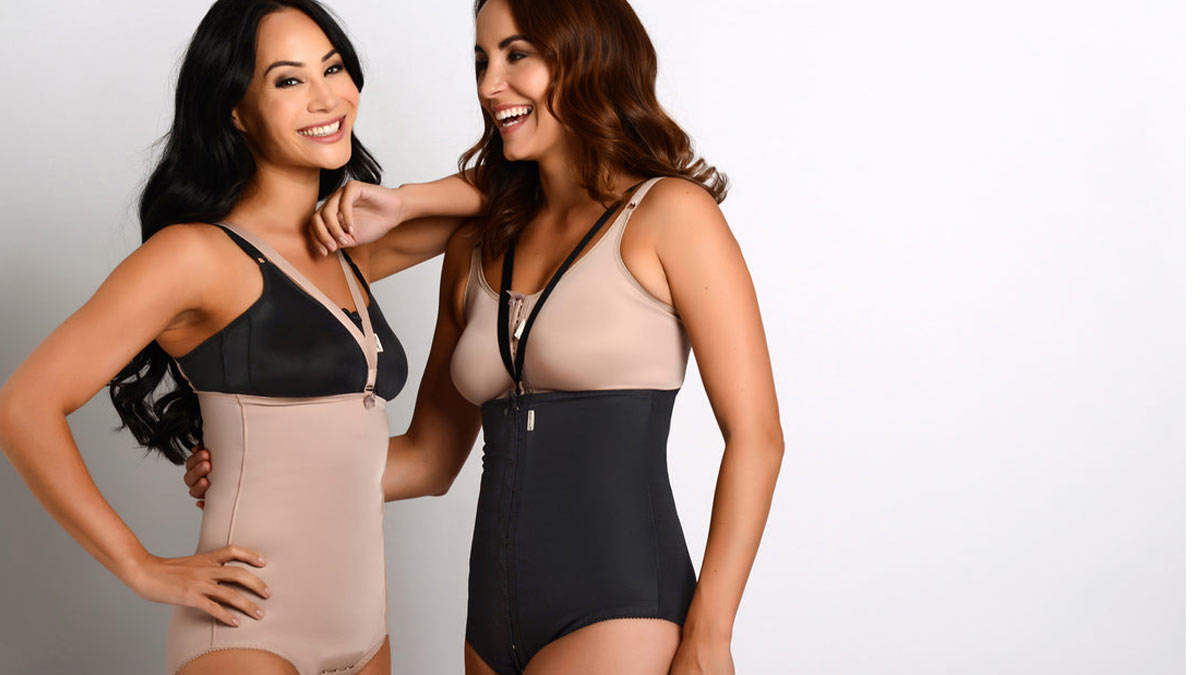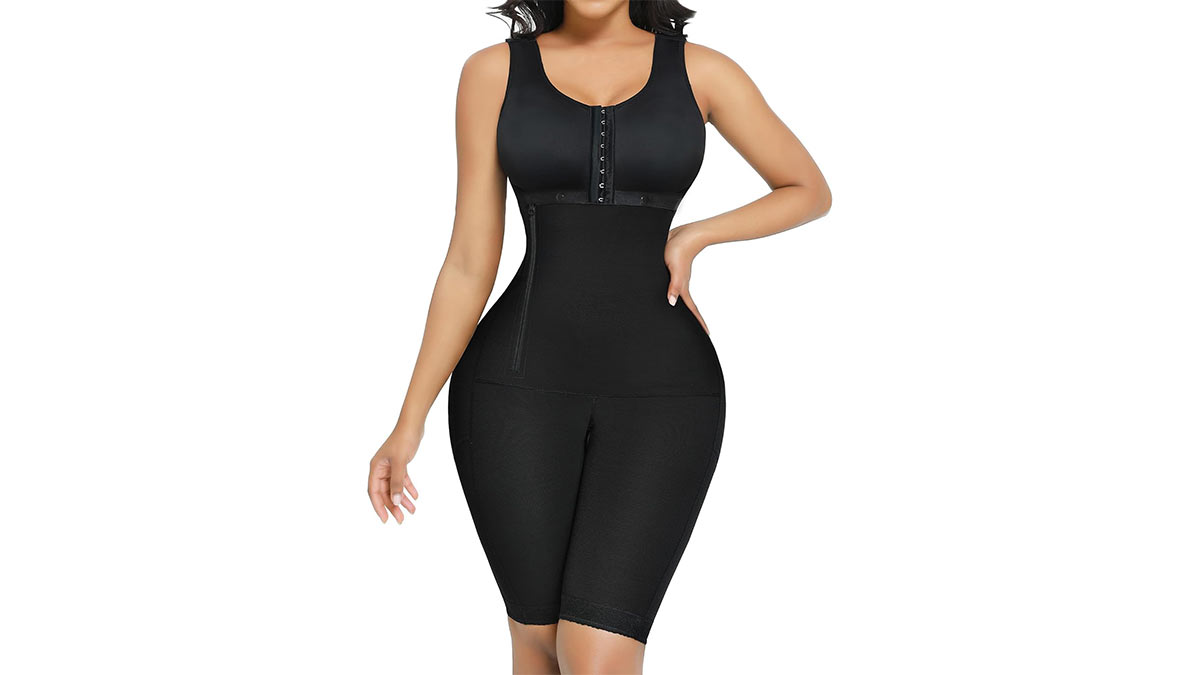In recent years, the concept of Weight loss assessment using compression garments has gained popularity among fitness enthusiasts, medical professionals, and individuals seeking non-invasive methods to support their slimming journey. Compression garments are no longer confined to post-surgical use or athletic recovery they are now widely used for shaping, body contouring, and assisting in temporary fat reduction appearances. This article explores how compression garments influence weight management, their physiological mechanisms, and their practical applications in modern health and wellness routines.

Compression garments are specialized clothing designed to apply consistent pressure to specific body areas. These garments promote improved blood circulation, muscle support, and better lymphatic drainage. In the context of Weight loss assessment using compression garments, they are often evaluated for their role in assisting calorie burning, reducing water retention, and creating a more contoured body shape.
While these garments don’t directly burn fat, they can influence the overall weight loss process by enhancing posture, increasing sweating during workouts, and supporting muscle alignment. Many users find that wearing them boosts their motivation, helping them stay consistent with their exercise and diet routines.
Interestingly, the science and technology behind compression garments reveals that their tightly woven materials can stimulate thermoregulation and microcirculation. This helps promote fluid movement within tissues, aiding in the appearance of a slimmer physique and better metabolic efficiency during exercise.
The Mechanism Behind Compression Garments in Weight Loss
When discussing Weight loss assessment using compression garments, one must understand that the benefits come from indirect physiological effects. Compression gear exerts mild pressure on the skin, encouraging better blood and lymphatic flow. This process helps the body eliminate toxins and reduce bloating, particularly in areas prone to fluid accumulation.
Moreover, the consistent compression can temporarily reduce body measurements by compacting tissues. This is why compression garments are widely used after body contouring procedures. For example, Garments After Fat Transfer Are Essential for Long Lasting Results because they help maintain even pressure, stabilize tissue, and prevent swelling principles that apply similarly to weight management and toning goals.
However, users should remember that compression garments do not melt fat. Instead, they are supportive tools that can enhance the effectiveness of a healthy lifestyle by encouraging better circulation, posture, and sweat output during exercise sessions.
The Role of Stomach Compression for Weight Loss

One of the most common areas where people seek fat reduction is the abdominal region. Stomach compression for weight loss products, such as waist trainers and abdominal belts, have become popular for those aiming to achieve a slimmer waistline. These garments create a thermal environment that promotes sweating, helping release retained water and toxins from the midsection.
Additionally, stomach compression improves posture by engaging the core muscles. Good posture not only prevents back pain but also enhances breathing and digestion, both of which play a role in effective weight management. Many individuals report that consistent use of these garments leads to a visibly tighter midsection and improved self-confidence.
Still, it’s essential to approach these tools realistically they provide external support rather than replacing exercise or a balanced diet. Integrating Stomach compression for weight loss with proper workouts and nutrition creates the best outcomes.
Types of Medical Compression Garments and Their Applications
There are various Types of Medical Compression Garments designed for specific purposes post surgery recovery, sports performance, or body shaping. In the medical field, compression garments are prescribed to manage swelling, improve circulation, and accelerate healing after surgeries like liposuction or body contouring.
These garments differ in compression levels, material thickness, and target areas. For weight management, moderate-compression designs are often preferred because they are comfortable for daily wear while still providing firm support. By incorporating these garments into daily routines, individuals can enhance their posture, reduce bloating, and stimulate a feeling of firmness that encourages better body awareness.
Interestingly, similar to rehabilitation gear, people who wear compression garments after a leg fracture benefit from improved circulation and reduced swelling. This medical principle is mirrored in weight management garments, where improved blood and lymph flow supports body toning and detoxification.
Comparing Compression Garments: Performance and Comfort
When Comparing compression garments, factors such as material quality, pressure distribution, comfort, and durability play key roles. Premium models use advanced fabrics that are breathable, moisture-wicking, and stretchable without losing shape. These qualities ensure that the garments provide firm yet comfortable compression throughout the day.
For effective Weight loss assessment using compression garments, it’s important to evaluate how the body responds to different compression levels and materials. Some garments focus on high-intensity shaping (like waist cinchers), while others prioritize gradual compression suitable for long wear. The goal is to find a balance between support and comfort tight enough to encourage sweating and muscle support, but not so tight that it restricts movement or breathing.
How Stomach Compression for Weight Loss Enhances Motivation

One of the lesser-known benefits of Stomach compression for weight loss is the psychological effect. When individuals wear shaping garments, they often experience an immediate visual improvement in body contour. This boost in confidence can serve as motivation to maintain a healthy lifestyle.
Moreover, the slight pressure reminds users to maintain proper posture and avoid overeating. This physical reminder can subconsciously promote better eating habits. The sensation of tightness encourages mindfulness about food portions, leading to more disciplined eating behavior.
The motivational aspect cannot be underestimated. Many fitness trainers recommend using compression wear as part of a structured transformation plan—not as a shortcut but as an aid in achieving consistency.
Assessing the Effectiveness of Compression Garments
To perform an accurate Weight loss assessment using compression garments, several factors should be monitored:
Body Measurements: Regularly track waist, arm, and thigh circumferences.
Hydration Levels: Compression increases sweating; therefore, staying hydrated is crucial.
Posture Improvement: Observe changes in core stability and back alignment.
Comfort and Fit: Proper fit ensures that circulation is improved without discomfort.
Visual and Functional Changes: Assess body tone, confidence, and energy levels.
While immediate changes are often temporary (due to water loss), long-term benefits like better posture, improved core engagement, and enhanced body awareness can contribute to gradual, sustainable transformation.
Integrating Compression Garments into a Fitness Routine
Incorporating compression garments into a daily fitness program can amplify results. For example, wearing them during cardio sessions promotes sweating and fluid release, while using them during resistance training provides muscle stabilization. When combined with a proper diet, hydration, and rest, the results can be noticeable within weeks.
Compression gear also supports joint stability, similar to how supportive clothing can protect muscles during recovery. For individuals combining fitness and recovery goals, this dual benefit makes compression garments a valuable tool in weight management plans.
For targeted belly slimming, Stomach compression for weight loss should be paired with core-strengthening exercises such as planks, bicycle crunches, and leg raises. The combination of pressure and active movement maximizes abdominal engagement and encourages better results.
Safety Considerations and Proper Usage

While Weight loss assessment using compression garments offers promising benefits, safety must always come first. Overly tight garments can restrict breathing, impair circulation, or cause skin irritation. Always choose the correct size, and limit wear time to a few hours daily—especially for high-compression models.
It’s also advisable to remove compression gear during sleep and avoid prolonged wear in extreme heat. If discomfort or numbness occurs, discontinue use immediately. Consulting a medical professional is recommended for individuals with cardiovascular conditions or circulation issues.
Future of Compression Garments in Weight Management
The growing demand for scientifically engineered body-shaping garments continues to push innovation. Manufacturers are now integrating smart textiles that monitor temperature, pressure, and muscle activity. As research evolves, Weight loss assessment using compression garments will likely become more precise, supported by data-driven analysis rather than just physical appearance.
Emerging technologies promise garments that adapt pressure dynamically, providing personalized support during workouts and rest periods. Such developments reflect how health, fitness, and technology are converging to make weight management safer and more effective.
Conclusion
In conclusion, Weight loss assessment using compression garments represents a modern blend of science, fashion, and fitness. These garments provide both functional and psychological support, helping individuals maintain better posture, enhance circulation, and stay motivated throughout their fitness journey. While they are not a substitute for a healthy diet or exercise, they can complement lifestyle efforts by promoting awareness, comfort, and discipline.
Moreover, the concept of Stomach compression for weight loss highlights how targeted garments can influence confidence, core engagement, and motivation. By combining compression wear with physical activity and balanced nutrition, users can achieve noticeable, sustainable improvements in body contour and well-being. As technology continues to evolve, the role of compression garments in weight management will only grow stronger, offering smarter, safer, and more effective solutions for modern health goals.







